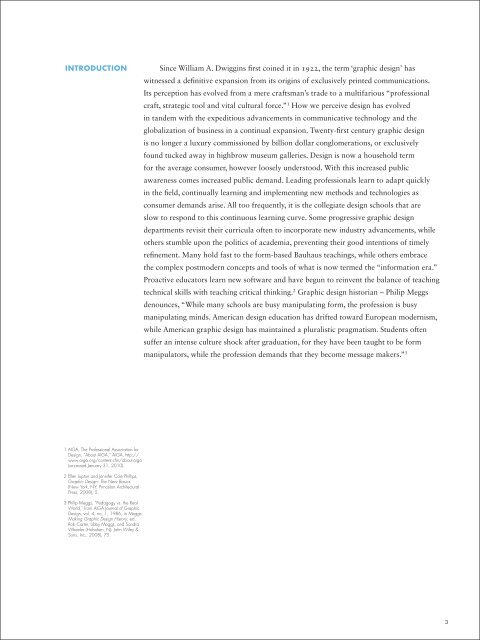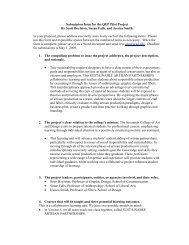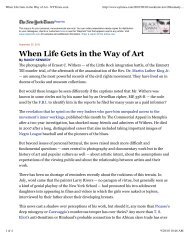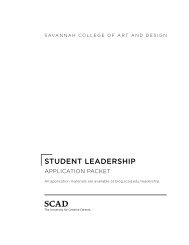Nicole Roberts MFA Thesis Visual Component Artwork - Savannah ...
Nicole Roberts MFA Thesis Visual Component Artwork - Savannah ...
Nicole Roberts MFA Thesis Visual Component Artwork - Savannah ...
Create successful ePaper yourself
Turn your PDF publications into a flip-book with our unique Google optimized e-Paper software.
introduction<br />
Since William A. Dwiggins first coined it in 1922, the term ‘graphic design’ has<br />
witnessed a definitive expansion from its origins of exclusively printed communications.<br />
Its perception has evolved from a mere craftsman’s trade to a multifarious “professional<br />
craft, strategic tool and vital cultural force.” 1 How we perceive design has evolved<br />
in tandem with the expeditious advancements in communicative technology and the<br />
globalization of business in a continual expansion. Twenty-first century graphic design<br />
is no longer a luxury commissioned by billion dollar conglomerations, or exclusively<br />
found tucked away in highbrow museum galleries. Design is now a household term<br />
for the average consumer, however loosely understood. With this increased public<br />
awareness comes increased public demand. Leading professionals learn to adapt quickly<br />
in the field, continually learning and implementing new methods and technologies as<br />
consumer demands arise. All too frequently, it is the collegiate design schools that are<br />
slow to respond to this continuous learning curve. Some progressive graphic design<br />
departments revisit their curricula often to incorporate new industry advancements, while<br />
others stumble upon the politics of academia, preventing their good intentions of timely<br />
refinement. Many hold fast to the form-based Bauhaus teachings, while others embrace<br />
the complex postmodern concepts and tools of what is now termed the “information era.”<br />
Proactive educators learn new software and have begun to reinvent the balance of teaching<br />
technical skills with teaching critical thinking. 2 Graphic design historian – Philip Meggs<br />
denounces, “While many schools are busy manipulating form, the profession is busy<br />
manipulating minds. American design education has drifted toward European modernism,<br />
while American graphic design has maintained a pluralistic pragmatism. Students often<br />
suffer an intense culture shock after graduation, for they have been taught to be form<br />
manipulators, while the profession demands that they become message makers.” 3<br />
1 AIGA: The Professional Association for<br />
Design, “About AIGA,” AIGA, http://<br />
www.aiga.org/content.cfm/about-aiga<br />
(accessed January 31, 2010).<br />
2 Ellen Lupton and Jennifer Cole Phillips,<br />
Graphic Design: The New Basics<br />
(New York, NY: Princeton Architectural<br />
Press, 2008), 5.<br />
3 Philip Meggs, “Pedagogy vs. the Real<br />
World,” from AIGA Journal of Graphic<br />
Design, vol. 4, no. 1, 1986, in Meggs:<br />
Making Graphic Design History, ed.<br />
Rob Carter, Libby Meggs, and Sandra<br />
Wheeler (Hoboken, NJ: John Wiley &<br />
Sons, Inc., 2008), 75.<br />
3
















